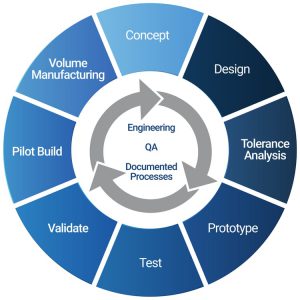Design for Manufacturability
- Cost constraints, especially critical for consumable medical devices
- Imaging resolution targets, from prototype through high volume
- FDA and MDR EU regulations, including traceability and documentation
- Quality standards, through consistent assembly processes and testing

The Precision Optics' Advantage
Design for manufacturability, also known as design for manufacturing or DFM, is the general engineering practice of designing products in such a way that they are easy to manufacture.
During product development, when should I engage with an optical engineering team?
During product development, when should I engage with an optical engineering team?
While there are always trade-offs in optical system design, an experienced optical design team can help you to make appropriate decisions from the start.
As one goes through the design process, have the design forms assessed in early stages by both the design and fabrication teams. Then, as the system becomes more defined, estimate tolerances, and run a Monte Carlo simulation on the effects of tolerance stacking on MTF resolution, line of sight, and depth of field, all of which may require an adjustment to the optical design.
Tolerance analysis of the mechanical design can also provide valuable feedback and can confirm that the tolerances for the opto-mechanical system will satisfy functional and performance requirements as predicted.
